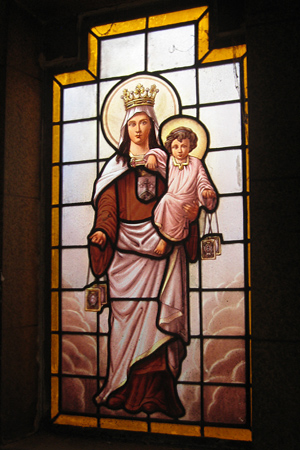
Documenting Recoleta Cemetery in Buenos Aires since 2007
Early visitors often see more cats since felines take advantage of the morning sunshine to warm up:
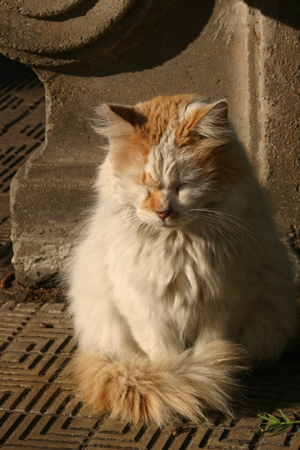
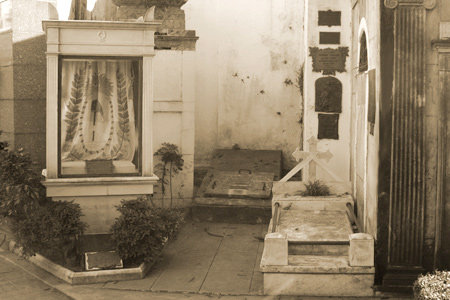
Everyone should know who “The Liberator” refers to: José de San Martín. He’s without doubt the most important Argentine who ever lived as well as a key player in world history. San Martín should be buried here alongside his parents (with the flag) & his wife, Remedios de Escalada (small tomb on right). But he’s too important even for Recoleta Cemetery… more on him in a bit.
A small plaque hidden in the bushes states that the parents’ remains were moved to Yapeyú in Corrientes province in February 1998. Their home was there, & it was the birthplace of San Martín. Another plaque explains that flag—a copy of the one San Martín carried during battle—was made by one of the Damas Patricias Argentinas, descendants of Argentine founding fathers:
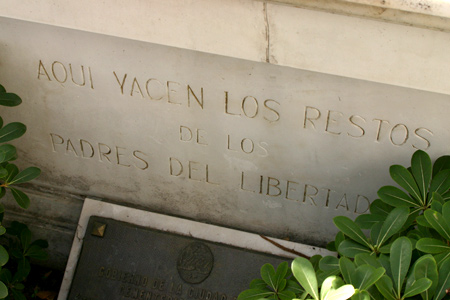
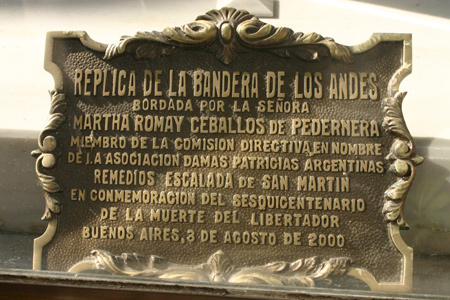
Responsible for leading the armies that eliminated Spanish control in Argentine territory, San Martín crossed the Andes Mountains on horseback with his troops & freed Chile from the Spanish. Not stopping there, he continued north to Perú. San Martín’s leadership & military skill gave three nations their independence. By the time fighting in South America was over in 1824, Remedios de Escalada had passed away from yellow fever. Their daughter, Mercedes, was cared for by her grandparents while San Martín was on the other side of the continent.
Instead of resting on his laurels or taking charge, San Martín returned to Buenos Aires & immediately left with his daughter to Europe. Before setting sail, he bought a simple tombstone & laid Remedios de Escalada to rest in Recoleta Cemetery… at that time only open for under two years. Her portrait decorates the adjoining wall:
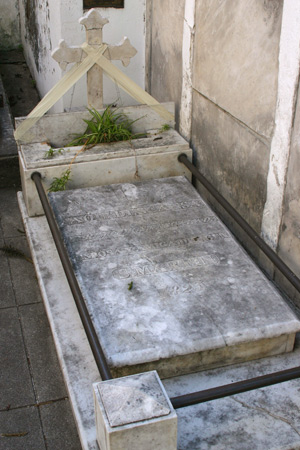
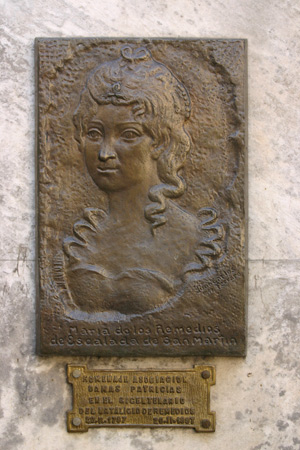
Argentines thought San Martín had abandoned them, & many European nations refused to allow San Martín to enter… after all, he was a revolutionary. Living in London, Brussels, & eventually settling in Paris, San Martín kept informed of events in South America but vowed never to use his sword again. He insisted that his fight was against the Spanish, & internal conflicts were a big mistake between newly independent nations.
A number of Argentine leaders visited him often in Europe, & he attempted one voyage back to Argentina. But due to the conflict between Buenos Aires & the rest of the nation, San Martín disembarked in Uruguay instead. He would never return to Argentina, dying in Boulogne-sur-Mer, France in 1850.
History almost forgot about San Martín because of his absence. But the opponents of Rosas (namely Sarmiento & Mitre) made sure that the contributions of San Martín were remembered. His remains were finally repatriated to Argentina in 1877. San Martín’s final resting place is inside the cathedral on Plaza de Mayo, protected by two guards of a regiment he created, the Granaderos:
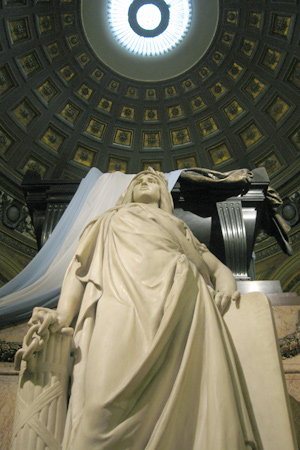
Circular or spherical forms represent something without a beginning or end… a natural process which unites all of us. Flowers, emblematic of beauty with a short life span, reminds us of the beauty a family member or friend shared while alive. Whether real or incoporated into sculpture, wreaths can be found scattered throughout Recoleta Cemetery:
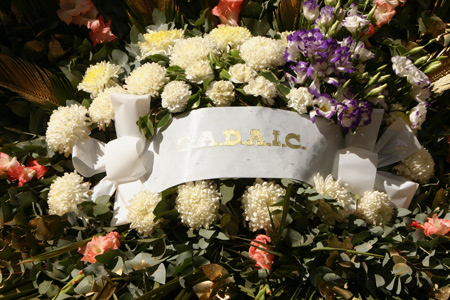
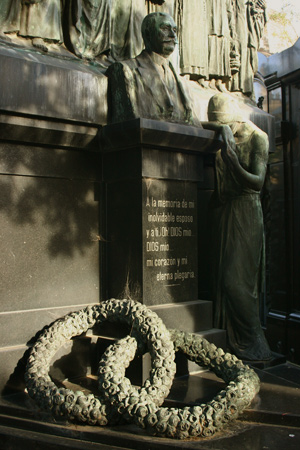
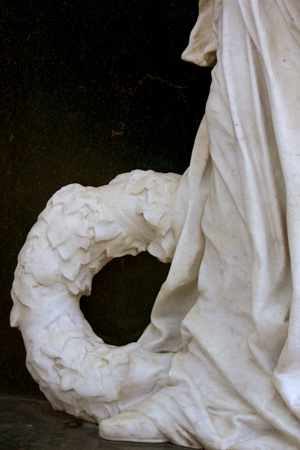
There are even two on the main entrance gate:
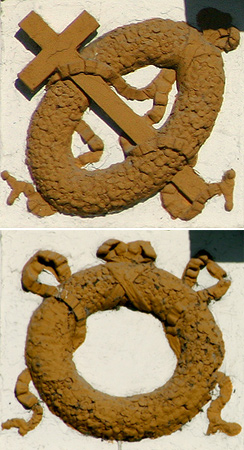
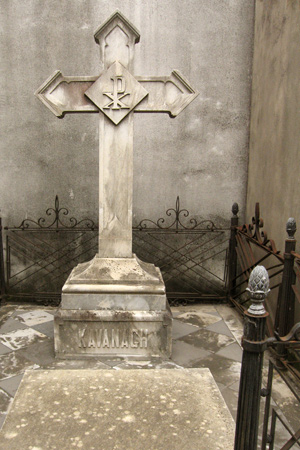
Anyone who has walked around Plaza San Martín in Buenos Aires should recognize this last name. Corina Kavanagh sold two family ranches when she was 39 years old to build Latin America’s first skyscraper. Completed in 1936, the Edificio Kavanagh represents a bold end to Art Deco & a new beginning for racionalismo, or Modernism as it is known in the US. 29 floors of reinforced concrete sit alongside the plaza & give the impression of a steamship inching through the urban landscape. Corina set aside the entire 14th floor for herself—the only floor with a single apartment—but for some unknown reason lived elsewhere in the building:
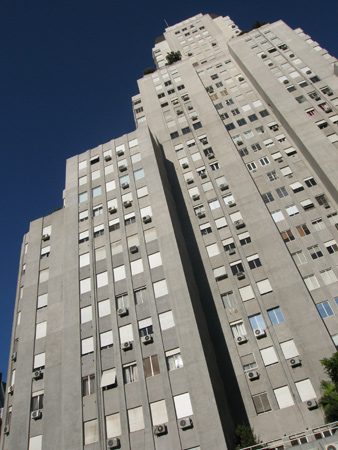
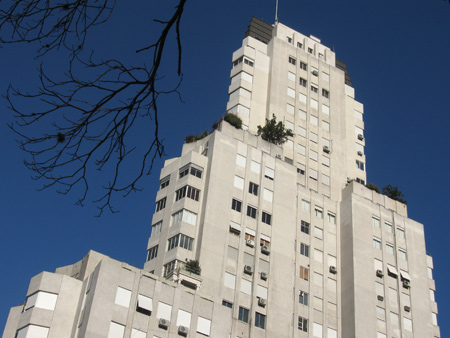
What inspired Corina to fund the construction? A legend exists that Corina fell in love with a son of the Anchorena family whose palatial residence also borders Plaza San Martín. But mom didn’t approve & made sure that her son broke it off with Corina.
Wanting revenge, Corina bought land in front of the Basílica del Santísimo Sacramento (meant to be the family mausoleum for the Anchorenas) & had the Kavanagh built so tall that the family wouldn’t be able to look out their windows to see the church. Sounds good but a little too good to be true. Since the Anchorena mom died in 1920 & the Kavanagh was built in 1936, the story is most likely someone’s invention. Corina passed away in 1984.
Update (Nov 2011): Through some unexpected connections, we were able to get a look at the gorgeous interior of this iconic BA beauty. See inside the kavanagh on our sister site, Endless Mile.
5 Comments